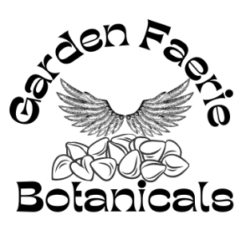The Whispering World of Faeries

Nestled in the heart of nature’s embrace, faerie gardens exist at the crossroads of the seen and the unseen, the known and the mystical. These gardens are not mere figments of fanciful imagination but are deeply rooted in history and mythology, weaving a tapestry that intertwines the real with the magical.
In the Mists of Antiquity
Our journey begins in the ancient world, where the belief in faeries was as real as the air the ancients breathed. In Celtic mythology, faeries, known as the “Aos Sí,” were revered as powerful, mystical beings. These early faerie gardens were sacred spaces, natural or cultivated, where the veil between the earthly and the ethereal was believed to be the thinnest.
Medieval Enchantment
In medieval times, faerie gardens were seen as a bridge to the supernatural world. Monks in their monastic gardens planted herbs and flowers, not only for their medicinal properties but also for the belief that they were home to nature spirits. Each plant, each bloom was thought to have a spirit, and gardens were designed to honor and appease these mystical inhabitants.
Renaissance Revival
The Renaissance period saw a revival of interest in the mystical and the mythical. Gardens during this era became more elaborate, designed to reflect the beauty and mystery of the faerie world. Nobility and commoners alike created gardens that were meant to be a haven for faerie folk, with intricate designs and hidden nooks that were said to attract these elusive beings.
Victorian Faerie Fervor
The Victorian era marked a significant point in the evolution of faerie gardens. This period saw a resurgence of faerie folklore, influenced by the romantic and artistic movements of the time. Gardens became elaborate stages where the lines between reality and fantasy blurred. Miniature landscapes, complete with tiny houses, intricate furniture, and delicate pathways, became popular, reflecting the Victorians’ fascination with the miniature and the magical.
Contemporary Faerie Gardens – A Modern Twist
Today, the concept of the faerie garden has been embraced with renewed enthusiasm. These gardens serve as a personal and creative expression, a way to bring a touch of magic into the modern world. People create these enchanting spaces in their backyards, on balconies, and even indoors, using a variety of plants, miniature structures, and decorations to create a sense of wonder and magic.
Crafting Your Own Faerie Realm
Creating a faerie garden is an act of imagination and creativity. It involves choosing the right plants, decorations, and layout to create a space that feels both magical and inviting. From selecting fairy-friendly plants like ferns and mosses to adding miniature houses and figurines, each element adds to the enchantment of the garden.
The Cultural Impact and Future of Faerie Gardens
The enduring popularity of faerie gardens speaks to their cultural significance. They represent a longing for connection with nature and the mystical. As we look to the future, these gardens hold the promise of fostering imagination, creativity, and a deeper appreciation for the natural world.
An Everlasting Enchantment
Faerie gardens are more than just a charming addition to our homes and landscapes; they are a gateway to a world of wonder, a place where the imagination can roam free. As you wander down the path of your journey to create a faerie garden, remember that you are not just planting flowers and rare and endangered heirloom seeds; you are keeping alive a tradition steeped in history, mythology, and magic.
